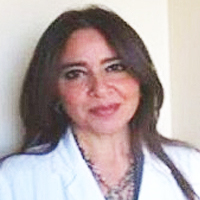Sleeplessness and health
Published on: 30th April, 2019
OCLC Number/Unique Identifier: 8299525804
Sleep influences each intellectual and physical health. It’s essential for a person’s well-being. The reality is when we see at well-rested people, they’re working at an exclusive degree than people making an attempt to get by way of on 1 or 2 hours much less nightly sleep. Loss of sleep impairs your higher tiers of reasoning, problem-solving and interest to detail. Sleep deficit will additionally make people much less productive and put them at higher danger for creating depression. Sleep affects almost each tissue in our bodies. It influences growth and stress hormones, our immune system, appetite, breathing, blood pressure and cardiovascular health. Nurses play a foremost function in teaching and guiding the sleep deprived patients on the importance of sleep and its physiological and psychological effects.
Radiofrequency ablation for snoring and sleep apnoea
Published on: 5th June, 2019
OCLC Number/Unique Identifier: 8165593317
Radiofrequency proves to be a useful tool for snoring/ sleep apnoea cases. Its advantage includes relative precision in incision making, relative bloodless fields if used appropriately, decrease postoperative pain and excellent healing with fibrosis which aids in stiffening tissues.
Radiofrequency is high frequency alternating current used to ablate (cut/coagulate) tissues. It can be applied to nasal turbinates, soft palate, tongue base, tonsils etc. and it can be used to perform various procedures in the cutting mode to improve obstructive sleep disordered breathing.
The objective/aim was to assess efficacy of radiofrequency as a tool for procedures/surgeries for snoring/ sleep apnoea.
The parameters assessed were post-op pain, post- op blood loss, reduction in subjective snoring sounds by patients and partner, reduction in AHI post operatively.
Diazepam Withdrawal Expression is related to Hippocampal NOS-1 Upregulation
Published on: 8th January, 2018
OCLC Number/Unique Identifier: 7325438145
Background: Benzodiazepines are usually prescribed for anxiety and sleep disorders in a long-term fashion that may cause drug dependence. Discontinuation after prolonged administration may lead to withdrawal expression, being anxiety the most predominant sign. It has been described that a context-dependent associative learning process underlies diazepam dependence. Nitric oxide is a crucial player in learning and memory processes, hippocampal transmission, as well as in benzodiazepines withdrawal. Considering that previous results from our laboratory showed an increase in hippocampal functional plasticity only in diazepam dependent rats, the aim of the present investigation is to determine whether diazepam dependence could alter neuronal nitric oxide synthase enzyme (NOS-1) expression within the hippocampus, by using western blot.
Results: chronic diazepam-treated animals that developed dependence showed increase in NOS-1 expression in dorsal, but not in ventral hippocampus, while no-dependent or control animals presented similar NOS-1 protein levels.
Conclusion: withdrawal from long-term diazepam exposure could be associated to increased nitric oxide neurotransmission within dorsal hippocampus induced by NOS-1 over-expression. This mechanism could underlie the improved hippocampal synaptic transmission previously observed in diazepam withdrawn animals. Confirmatory experiments need to be addressed to determine the mechanisms by which nitric oxide participates in benzodiazepines withdrawal in order find new molecular targets to develop pharmacological tools to prevent the withdrawal syndrome
Neurobiology of Common Sleep Disorders
Published on: 14th August, 2018
OCLC Number/Unique Identifier: 7844539109
Sleep disorders in human are common and detrimental to general health of all age groups. While the neurobiological mechanisms of sleep disorders are not yet fully understood, recent advances in research on the sleep-wake regulation mechanism, genetic and epigenetic factors, cognitive, emotional and physiological changes related to sleep have shed light on the mechanistic basis of sleep disorders. Over the past two decades, studies in Drosophila have yielded new insights into basic questions regarding sleep function and regulation. More recently, powerful genetic approaches in the fly have been applied toward studying primary human sleep disorders and other disorders associated with dysregulated sleep. In this review, we discussed recent advances in neurobiology of sleep-wave cycle and common sleep disorders. Understanding these mechanisms are important in the diagnosis, treatment and prevention of these common disorders.
Impact of mandibular advancement device in quantitative electroencephalogram and sleep quality in mild to severe obstructive sleep apnea
Published on: 30th December, 2020
OCLC Number/Unique Identifier: 8899350400
Sleep related breathing disorders (SRBD) are among seven well-established major categories of sleep disorders defined in the third edition of The International Classification of Sleep Disorders (ICSD-3), and Obstructive Sleep Apnea (OSA) is the most common SRBD [1,2]. Several studies have demonstrated that obstructive sleep apnea treatment increases the quality of life in OSA patients [3-8]. Indeed, excessive daytime sleepiness (EDS), cognitive impairment (e.g., deficits in attention-concentration, memory, dexterity, and creativity), traffic accidents, and deterioration of social activities are frequently reported in untreated patients [9-11]. Furthermore, an increase in cardiovascular morbidities and mortality (systemic hypertension, stroke, cardiac arrhythmias, pulmonary arterial hypertension, heart failure) [12], metabolic dysfunction, cerebrovascular ischemic events and chemical/structural central nervous system cellular injuries (gray/white matter) has been reported in OSA patients [13-17].
Continuous positive airway pressure (CPAP) therapy is considered the gold standard for treatment of moderate-severe OSA, nevertheless there is an increasing body of evidence supporting the usefulness of mandibular advancement devices (MADs) for improving quality of life and respiratory parameters even among patients with a high severity of OSA burden [5,10,18,19]. According to the standard of care of the American Academy of Sleep Medicine (AASM), MADs are indicated for mild to moderate OSA particularly in the context of CPAP intolerance or refusal, surgical contraindication, or the need for a short-term substitute therapy [9,15,20-22]. In Cuba, CPAP machines are not readily available; they are expensive and the majority of OSA patients cannot obtain this mode of therapy. Taking into account this problem, our hypothesis was based in the scientific evidences of MAD effectiveness, considering that low cost MADs could offer a reasonable alternative treatment for patients with OSA where CPAP technology are not handy. In this way our purpose was to assess the efficacy of one of the most simple, low cost, manufactured monoblock MAD models (SAS de Zúrich) in terms of improvements in cerebral function, sleep quality and drowsiness reports in a group of Cuban OSA patients with mild to severe disease. Outcome measures included changes in the brain electrical activity, sleep quality, and respiratory parameters, measured by EEG recording with qEEG analysis and polysomnographic studies correspondingly, which were recorded before and during treatment with an MAD, as well as subjective/objective improvements in daytime alertness.
Non-alcoholic fatty liver disease: Update on treatment options and translational implications of sleep disruption
Published on: 17th August, 2021
OCLC Number/Unique Identifier: 9206109721
Non-alcoholic fatty liver disease (NAFLD) is a condition that is associated with cirrhosis and hepatocellular carcinoma, and is increasing in prevalence worldwide. Sleep disruptions are commonly seen in NAFLD, and the disease process is associated with sleep disorders, including obstructive sleep apnea, circadian rhythm disorders, and insufficient sleep. The intermittent hypoxia seen in obstructive sleep apnea may contribute to fibrotic changes in the liver.A major component of this linkage may be related to gut microbiome changes. One notable change is increase in Bacteroidetes/Firmicutes ratio, and decrease in flora that ferment fiber into anti-inflammatory short-chain fatty acids. Several therapeutic options exist for NAFLD that target both sleep and NAFLD, including non-pharmacological factors, such as lifestyle modification (mainly diet and exercise). Pharmacological options include melatonin, Vitamin E, thiazolidinediones, and fecal microbiota transplantation.Core tipThe pathogenesis of non-alcoholic fatty liver disease is closely tied to sleep and circadian rhythm abnormalities, through shared inflammatory pathways and altered metabolism. This review explores the pathogenesis of NAFLD in the context of sleep and circadian abnormalities. The associated inflammatory response is linked to changes in gut-microbiome interactions that contribute to the disease process. Understanding of this linkage has implications for various therapies for disease mitigation.
Menstrual cycle effects on sleep
Published on: 5th April, 2022
OCLC Number/Unique Identifier: 9470691728
Sleep and menstrual cycle both are normal physiological processes in women’s life but they are regulated by different centers. Sleep is a daily rhythm whereas the menstrual cycle lasts for 28 days. During this period the estrogen peaks twice. We have shown earlier that there is an inverse relationship between estrogen and the hormone melatonin which aids sleep. Because of this menstruating women will have sleep disorders.
Sleep Disorders and Sleep Studies Case Reports
Published on: 11th December, 2024
Sleep disorders represent a significant public health concern due to their widespread prevalence, impact on overall health, and the economic burden they impose. These disorders encompass a broad spectrum of conditions, ranging from insomnia and obstructive sleep apnea (OSA) to narcolepsy, restless legs syndrome (RLS), and parasomnias. They are often associated with comorbidities such as cardiovascular diseases, metabolic dysfunctions, and mental health disorders, making their identification and management critical.The publication of this work is of high interest as it contributes to the expanding body of literature focused on understanding the complex interplay between sleep disorders and health outcomes. By presenting detailed case reports, this study provides valuable insights into the diagnostic challenges, treatment modalities, and potential avenues for personalized interventions in sleep medicine. Case reports are particularly important in this field as they shed light on unique presentations and rare conditions that might otherwise go unnoticed in large-scale epidemiological studies. From an epidemiological perspective, sleep disorders are highly prevalent globally. According to the World Health Organization (WHO), approximately 30% - 45% of the global population experiences sleep disturbances. Obstructive sleep apnea, for instance, affects nearly 1 billion individuals worldwide, with varying prevalence across age, gender, and geographic regions. Insomnia affects roughly 10% - 30% of adults, with rates as high as 50% - 60% in older populations.Meanwhile, narcolepsy, though rare, is estimated to affect 1 in 2,000 people in the general population. These statistics underscore the pressing need for enhanced diagnostic methods, improved treatment strategies, and comprehensive patient management. By detailing real-world cases, this publication aims to bridge the gap between clinical observations and broader scientific understanding. The insights gained from these case studies have the potential to inform future research directions, improve clinical practices, and ultimately enhance patient outcomes in sleep medicine.Sleep disorders affect millions of individuals globally, disrupting physical, mental, and emotional well-being. Conditions such as insomnia, obstructive sleep apnea (OSA), narcolepsy, and restless legs syndrome (RLS) are among the most studied. This paper examines the etiology, diagnosis, and management of sleep disorders, presenting detailed case reports and integrating relevant sleep study findings. Figures such as polysomnography (PSG) outputs and statistical trends provide visual insights into diagnostic and therapeutic interventions. Sleep disorders encompass a wide range of conditions that significantly disrupt sleep quality and overall well-being. Common disorders such as insomnia, obstructive sleep apnea (OSA), narcolepsy, and restless legs syndrome (RLS) affect millions globally, posing risks to physical health, mental stability, and cognitive performance. This study explores the clinical presentation, diagnostic approaches, and management of sleep disorders through the lens of detailed case reports and sleep study data.Polysomnography (PSG), the gold standard for sleep disorder diagnosis, plays a pivotal role in identifying abnormal sleep patterns, respiratory irregularities, and neural disruptions. Multiple sleep latency tests (MSLT) and actigraphy complement PSG, offering insights into disorders like narcolepsy and circadian rhythm abnormalities. This paper presents three representative case reports: chronic insomnia, severe OSA, and narcolepsy with cataplexy. Each case is analyzed in-depth, highlighting patient history, PSG findings, treatment interventions, and outcomes. For chronic insomnia, cognitive-behavioral therapy for insomnia (CBT-I) and pharmacological intervention resulted in marked improvements in sleep latency and efficiency. In the OSA case, continuous positive airway pressure (CPAP) therapy significantly reduced the apnea-hypopnea index (AHI) and alleviated daytime symptoms. The narcolepsy case demonstrates the efficacy of modafinil and sodium oxybate in managing excessive daytime sleepiness and cataplexy.Despite advancements, challenges persist in the field, including patient adherence to therapy, accessibility to specialized sleep studies, and the ethical implications of AI-driven diagnostic tools. Future research should focus on scalable, patient-centric approaches and the role of emerging technologies in enhancing diagnostic accuracy and treatment efficacy. This paper aims to contribute to the evolving understanding of sleep disorders, bridging clinical case insights with the broader implications for sleep health and research.
















